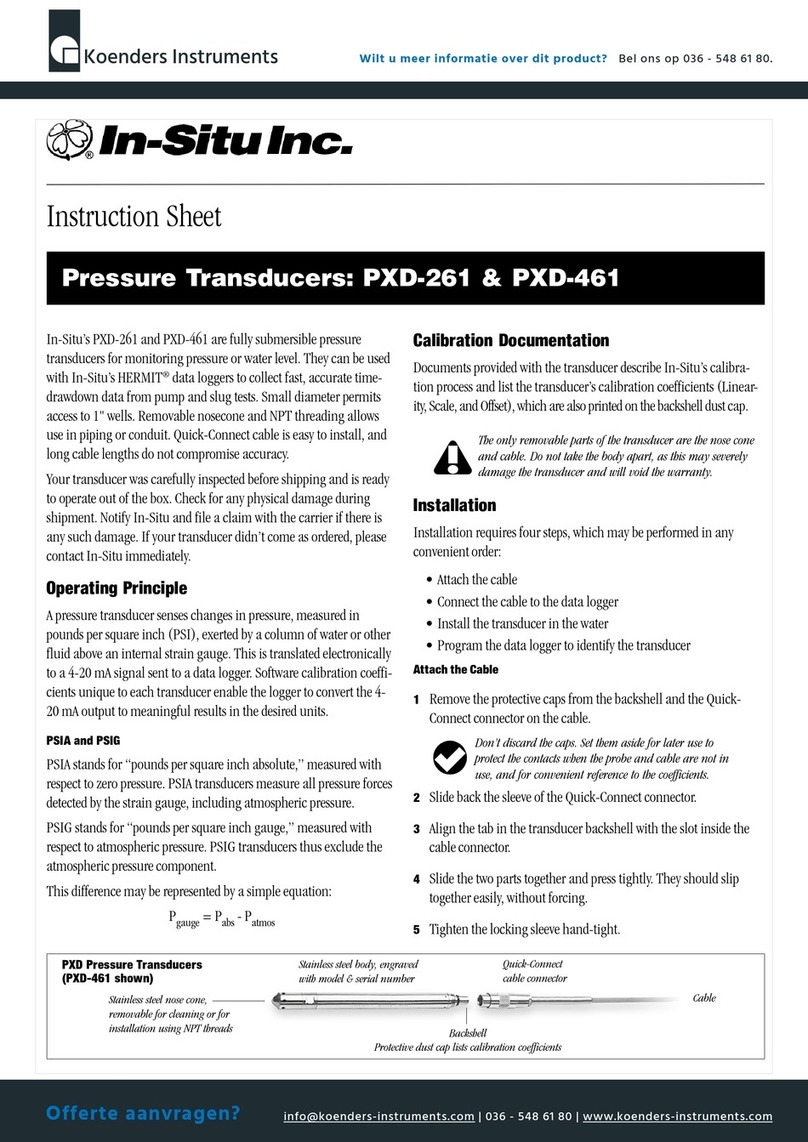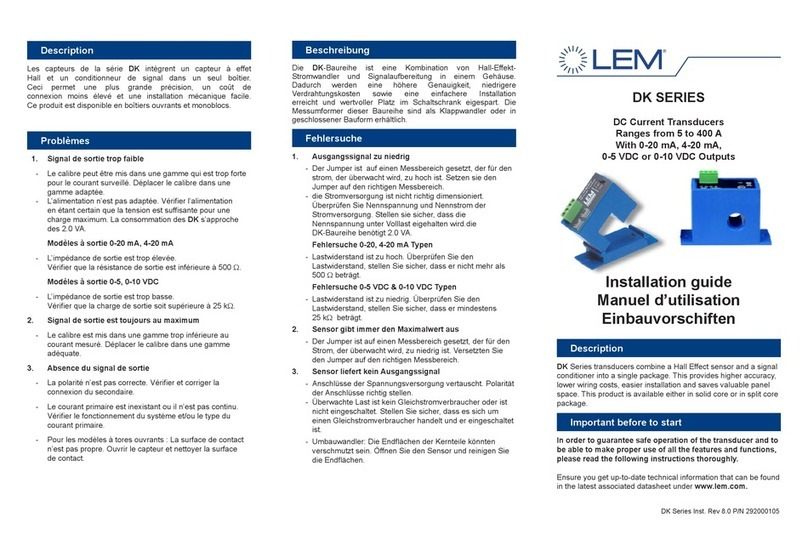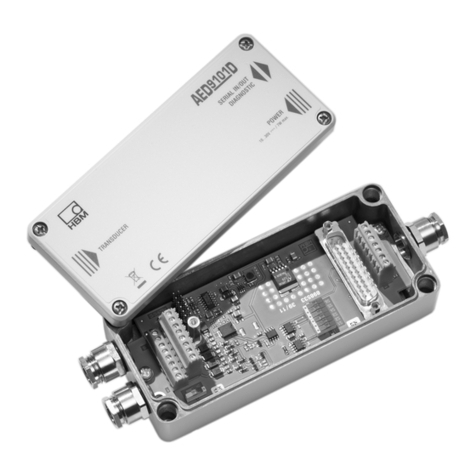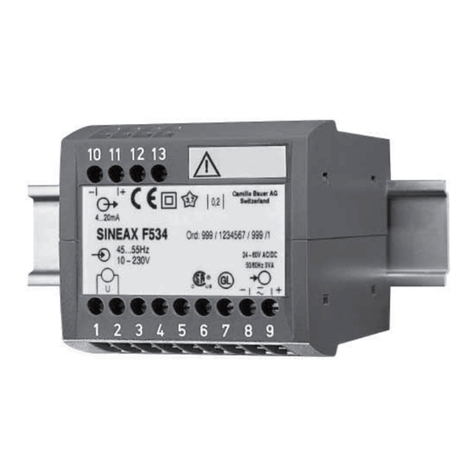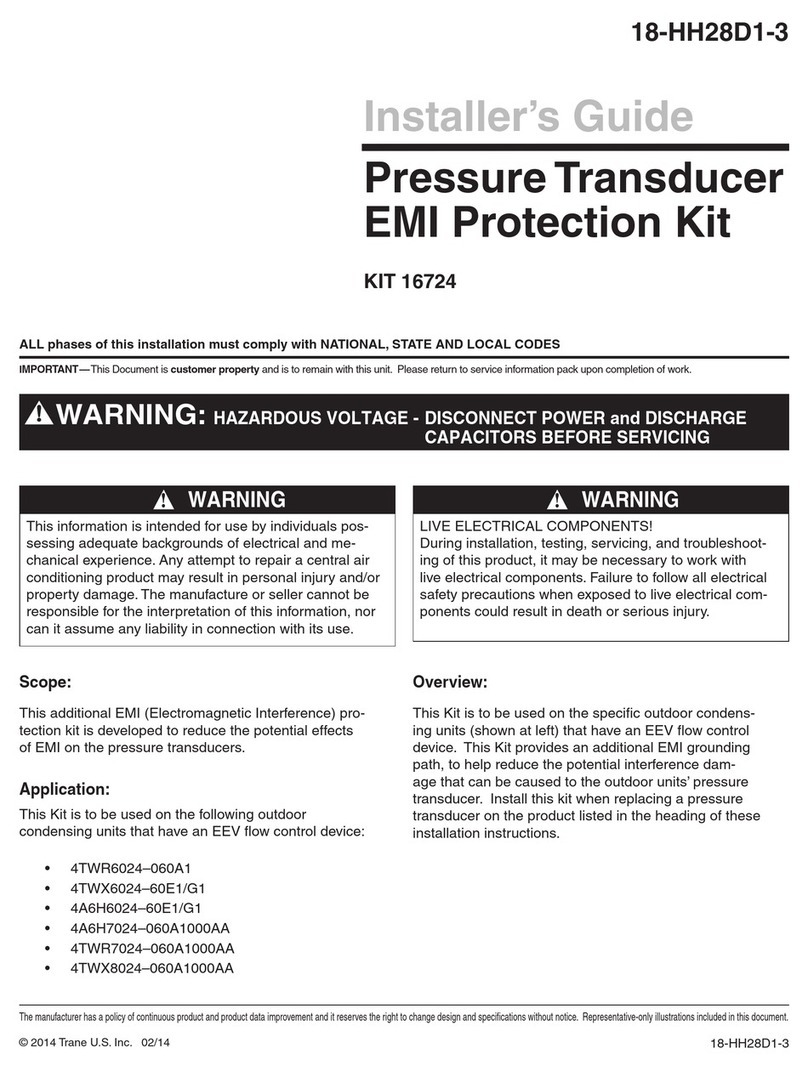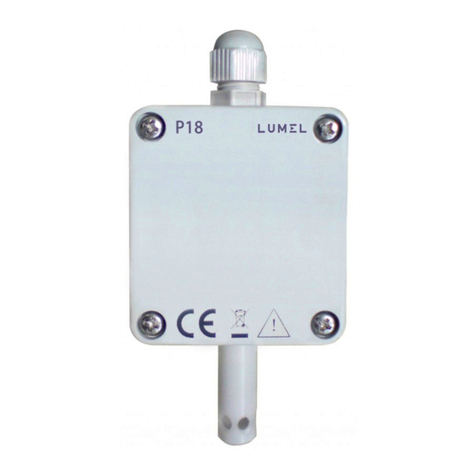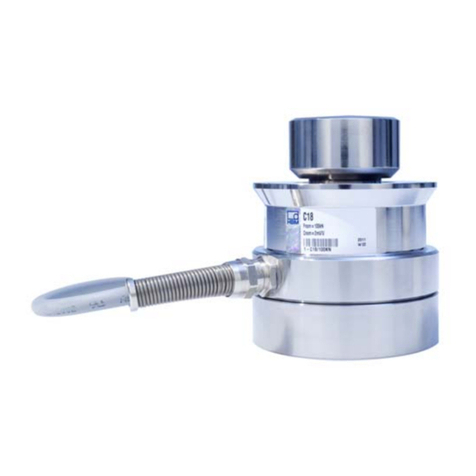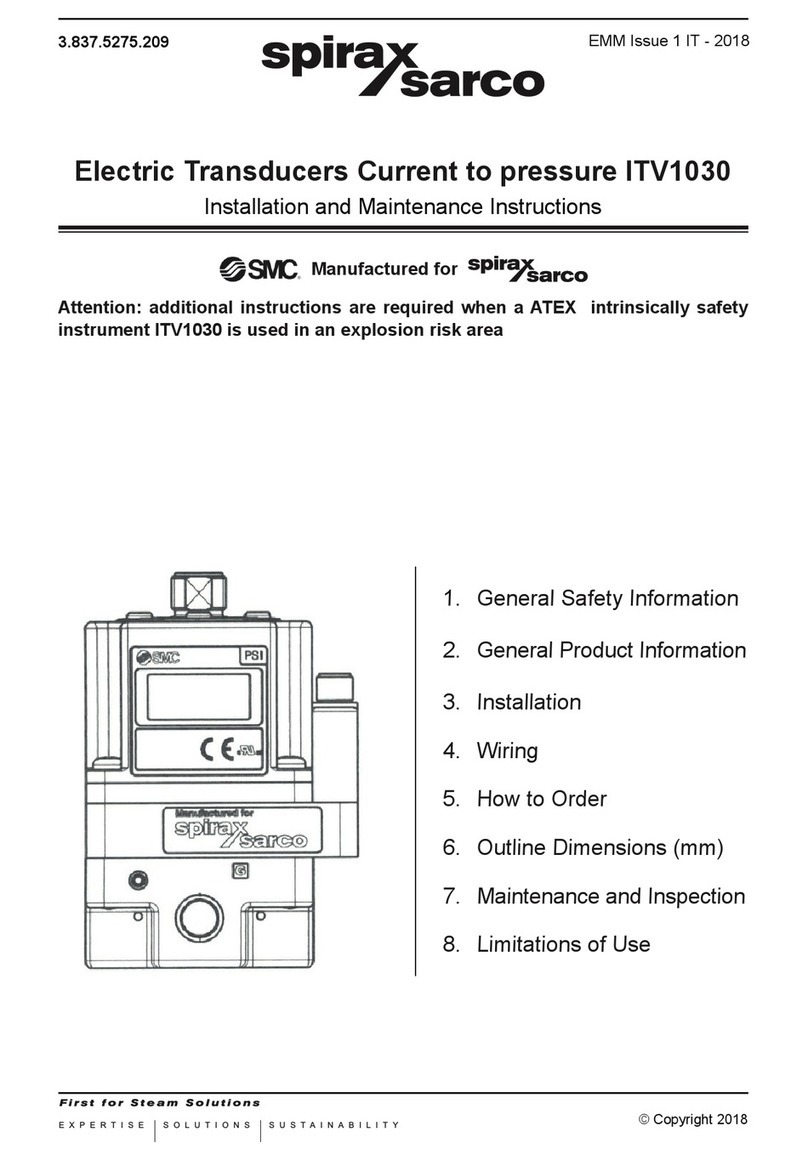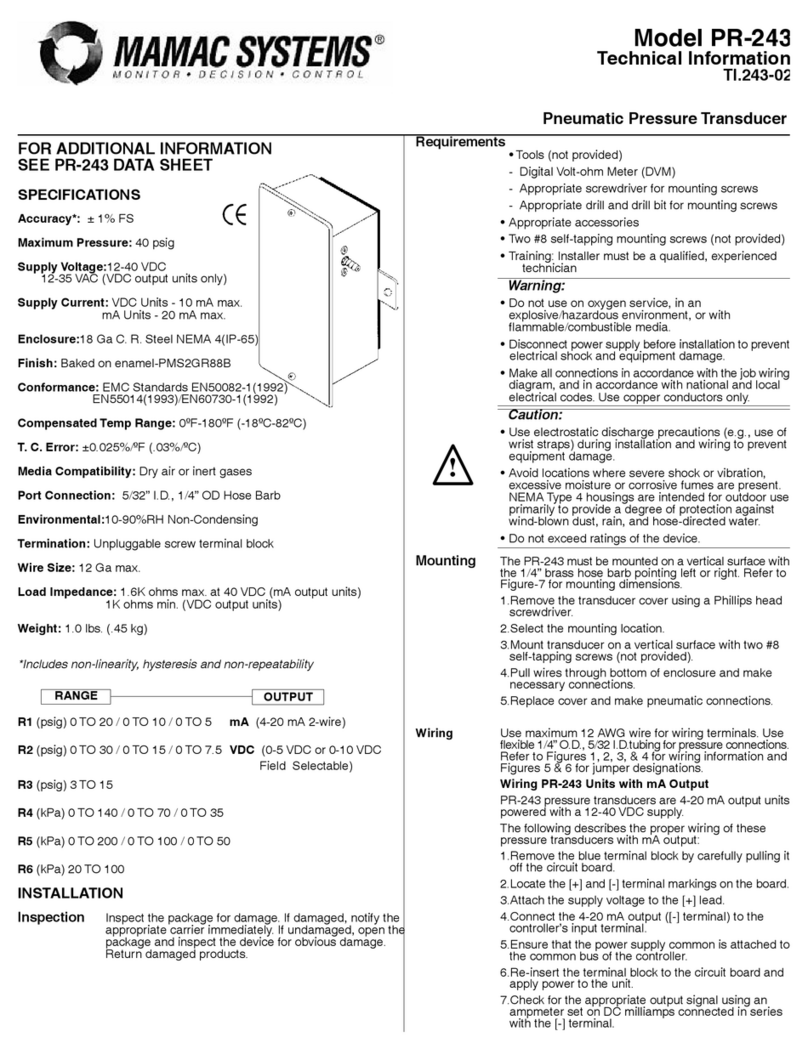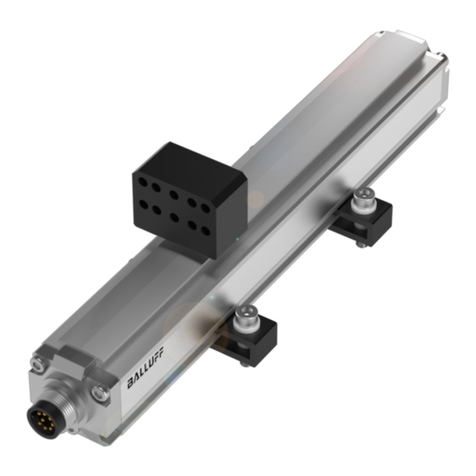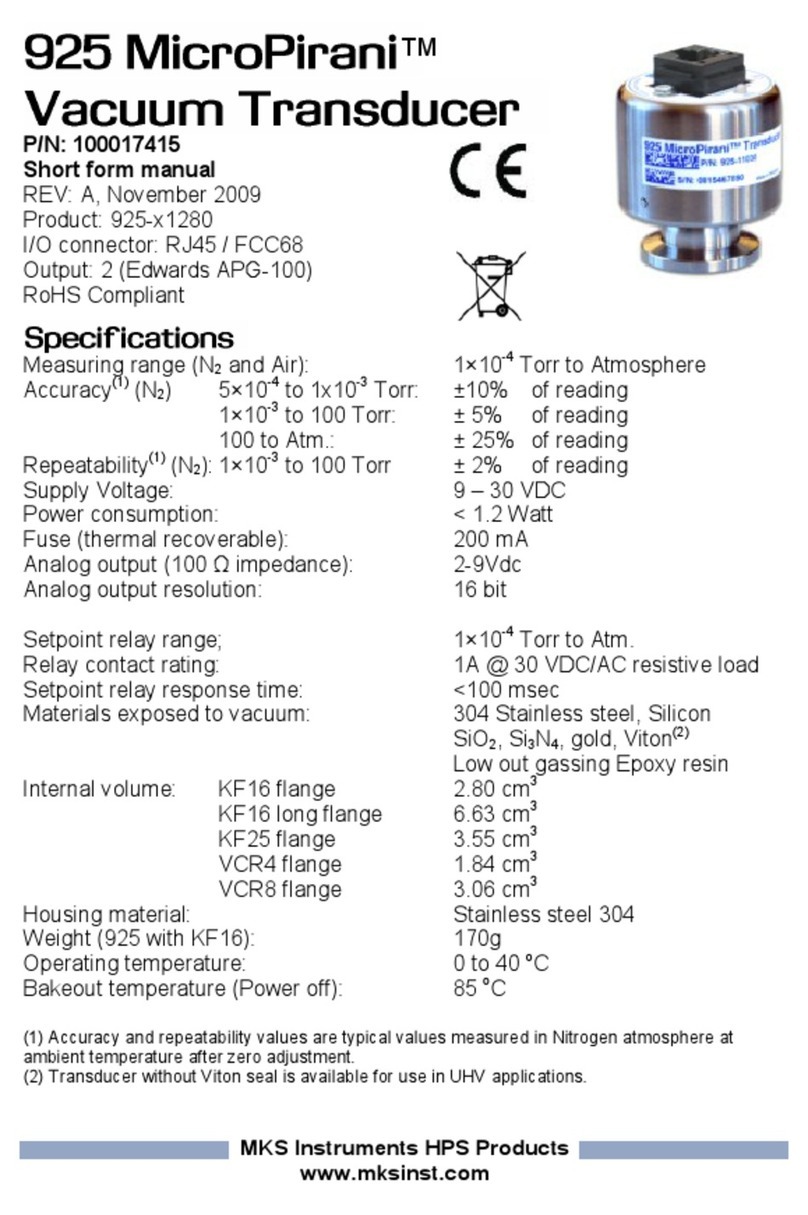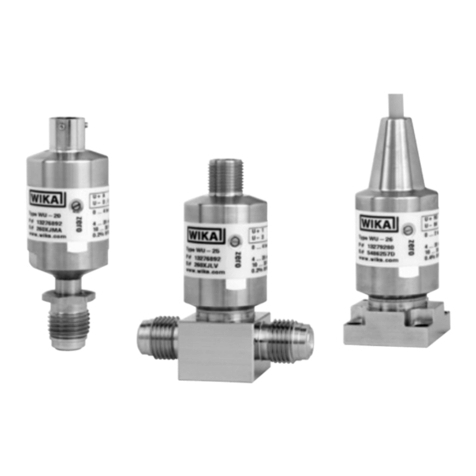In-situ PTX-1830 User manual

Instruction Sheet
1 800 4INSITU
(toll-free, US and Canada) or 970 498 1500 www.in-situ.com
The PTX-1830 is a fully submersible pressure transducer
for measuring pressure or water level. It can be used
with In-Situ’s HERMIT™data loggers to collect fast,
accurate time-drawdown data from pump and slug
tests. The 0.69” diameter titanium/stainless steel body
is molded to a polyurethane jacketed cable for a high
integrity waterproof assembly.
Operating Principle
A pressure transducer senses changes in pressure, mea-
sured in pounds per square inch (PSI), exerted by a
column of water or other fluid above an internal strain
gauge. This is translated electronically to a 4-20 mA
signal sent to a data logger. Software calibration
coefficients unique to each transducer enable the logger
to convert the 4-20 mA output to meaningful results in
the desired units.
Calibration Documentation
Documents provided with the transducer describe In-
Situ’s calibration process and list the transducer’s
calibration coefficients (Linearity, Scale, and Offset).
Installation
Installation of the PTX-1830 has three steps, which may
be performed in any convenient order:
• Connect the transducer cable to the data logger
• Program the data logger to identify the type and
characteristics of the transducer
• Install the PTX-1830 in the monitoring site
Connect to the Data Logger
To connect to In-Situ’s HERMIT data loggers:
1Remove the protective caps from the logger and
cable connectors.
22
22
2 Orient the connector patterns
so that the large tab in the
cable connector aligns with
the V-shaped notch in the data
logger connector.
33
33
3 Gently press the connector halves together. Excessive
force should not be required.
44
44
4 Tighten the connector’s lock ring to establish a tight
connection and water-resistant seal.
PTX-1830 Pressure Transducer
Proper operation of a transducer depends upon a
clean, dry connection. Be sure the connectors are
clean and dry before installing them.
There are no user-serviceable parts in the PTX-1830.
Do not attempt to service the unit yourself; doing so
can cause permanent damage to the transducer
and will void your warranty.
Large tab

Program the Data Logger
The process of collecting data from the PTX-1830 and
In-Situ’s data loggers is referred to as “running a test.”
This has three steps:
• Enter the transducer characteristics into the logger
• Enter the test conditions into the logger
• When the logger is programmed and the PTX-1830
is installed, the test can be started
How you carry out these steps depends on the model of
data logger you are using. For specific information,
please refer to the data logger Operator’s Manual.
Installation Guidelines
• For best results, install the PTX-1830 about an hour
prior to test setup or data collection. This will insure
that the transducer is stabilized to the water tem-
perature and allow time for the cable to stretch or relax.
• To conserve battery power, don’t put the transducer
any deeper than necessary for the test.
• To verify operation, raise and lower the transducer
and check that readings are reasonable and
showing change before starting a test.
• Be sure that the transducer is attached securely to the
wellhead or other stationary object and will not slip
during operation.
• Do not submerge a transducer more than two times
its range, or it will be permanently offset, damaged,
or destroyed.
• Don’t set a pressure transducer below the level of the
pump in a pumping well. The pressure transients
generated by the pump will cause false level
readings. Large pumps can swallow the transducer
and cause permanent damage to both the transducer
and the pump.
• The PTX-1830 will not read past its designated
range. If the range is exceeded, the value displayed
by the data logger will remain constant.
• Keep the vent tube in the cable unobstructed. Avoid
kinks in the cable. Minimum recommended bend
radius is one inch.
Using the Transducer with Other
Equipment
The transducer provides a current output that is propor-
tional to the applied pressure. This output is a 4-20 mA
change corresponding to a full-scale change in pressure.
The voltage required by the transducer is 9–30 (maxi-
mum) VDC.
Any data logger that provides the necessary voltage and
can read the 4-20 mA current output can be used with
the transducer. To insure accuracy, power should be
applied for a minimum of 50 milliseconds prior to any
reading.
The wiring of the transducer is shown below. It is a
standard 2-wire, 4-20 mA transducer.
BLK
YLW
*
**
* and red for cable > 1500 ft.
** and orange for cable > 1500 ft.

Mating connectors must be ordered separately from In-
Situ, Inc. A kit with wiring diagrams is available. Do
not use any other type of connector as this will
compromise the integrity of waterproof operation. Also,
remember that the vent tube in the cable must remain
unobstructed to assure that the transducer is insensitive
to barometric pressure changes.
Maintenance
The pressure sensor of the PTX-1830 is designed to be
insensitive to barometric pressure changes. A vent tube
incorporated into the cable assures that atmospheric
pressure is the reference pressure to the sensor dia-
phragm. For proper operation, the vent tube should not
be bent, kinked, or otherwise obstructed. Such obstruc-
tions will cause barometric pressure fluctuations to
appear in measurements, and large, varying errors will
be introduced due to thermal expansion and contrac-
tion of air within the vent tube and probe body.
The pressure sensor diaphragm is protected by the
nosecone. This diaphragm is very sensitive and must be
protected in the event that the nosecone is removed.
If the holes in the nosecone become plugged, try a
gentle rinse with a squirt bottle, or swish the probe in a
bucket of water. If the nosecone must be removed, be
very careful with the exposed pressure diaphragm. Never
try to dig sediment away from the pressure sensor. If you
encounter any problems, contact Customer Service, as
described below.
To Obtain Repair Service (U.S. and Canada)
If you suspect that the transducer is malfunctioning
and repair is required, you can help assure efficient
servicing by following these guidelines:
1Call In-Situ Customer Service toll-free at 1-800-446-
7488. Have the model and serial number handy.
2Be prepared to describe in detail the exact nature
(symptoms) of the problem, including how the
instrument was being used and the conditions noted
at the time of the malfunction.
3If service personnel determine that service is
required, they will assign an RMA (Return Material
Authorization) number.
4Clean the probe and cable. Decontaminate thor-
oughly if it has been used in a toxic or hazardous
environment.
5Pack the transducer in its original shipping box, if
possible.
6Send the package, shipping prepaid, to
In-Situ, Inc.
Customer Service
ATTN: RMA # _(assigned no. here)_
221 E. Lincoln Ave.
Ft. Collins, CO 80524
The warranty does not cover damage during transit. In-
Situ recommends the customer insure all shipments.
Warranty repairs will be shipped back prepaid.
Please . . . call us before you return equipment,
and remember to put the RMA number on the label.
In-Situ Inc. does not warrant the transducer
against damage caused by use with devices not
provided by In-Situ.

Specifications
Wetted materials: Titanium, 316 stainless steel, acetal
Transduction
principle: Titanium-encased silicon strain gauge
bridge
Dimensions: 0.69” diameter, 7.86” long (1.75 ×20 cm)
Weight: 4 oz. (0.12 kg)
Storage temp.: -20° to 60°C (-4° to 140° F)
Compensated
temp. range: -2° to 30°C (28° to 85° F)
Input 9 to 30 VDC
Output: 4-20 mA (typical) over pressure range
Ranges: Pressure Max. Usable Depth
5 PSIG 11.5 ft. / 3.5 m water
10 PSIG 23 ft. / 7 m water
15 PSIG 35 ft. / 11 m water
20 PSIG 46 ft. / 14 m water
30 PSIG 69 ft. / 21 m water
50 PSIG 115 ft. / 35 m water
100 PSIG 231 ft. / 70 m water
150 PSIG 346 ft. / 105 m water
Overpressure
tolerance: 2x full range
Accuracy: 0.1% of range
Warning
There are no user-serviceable parts in the PTX-
1830. Do not attempt to service the unit yourself;
doing so can cause permanent damage to the
transducer and will void your warranty.
Cable
Wetted material: Polyurethane
Size: 0.25” (6.4 mm) OD nominal
Weight: 4.7 lb/100 ft. (2.1 kg/30 m)
Reels optional
Warranty Provisions
In-Situ Inc. warrants all products sold, excluding
batteries sold with such products, against defects in
materials and workmanship under normal operating
conditions. Consult the separate warranty for specific
warranties that may apply.
0012910 rev. 001 09/04
Due to continuing product development this information is subject to change without notice. In-Situ, HERMIT, and the In-Situ logo are trademarks or registered
trademarks of In-Situ Inc. Other trademarks are the property of their respective owners. Copyright © 1998, 2004 by In-Situ Inc. All rights reserved.
Outside the U.S. and Canada
Contact your international In-Situ distributor for repair
and service information.
Other In-situ Transducer manuals
Popular Transducer manuals by other brands
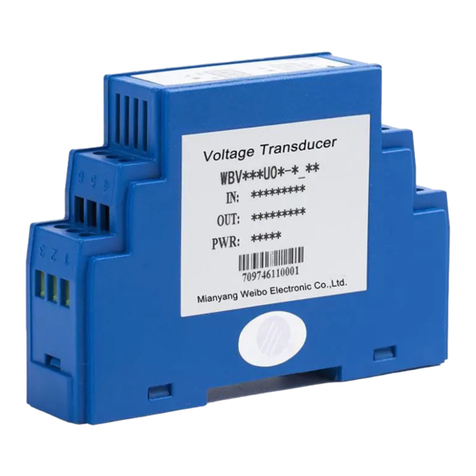
Mianyang Weibo Electronic
Mianyang Weibo Electronic WB Series user manual

ProMinent
ProMinent Dulcometer DMT operating instructions
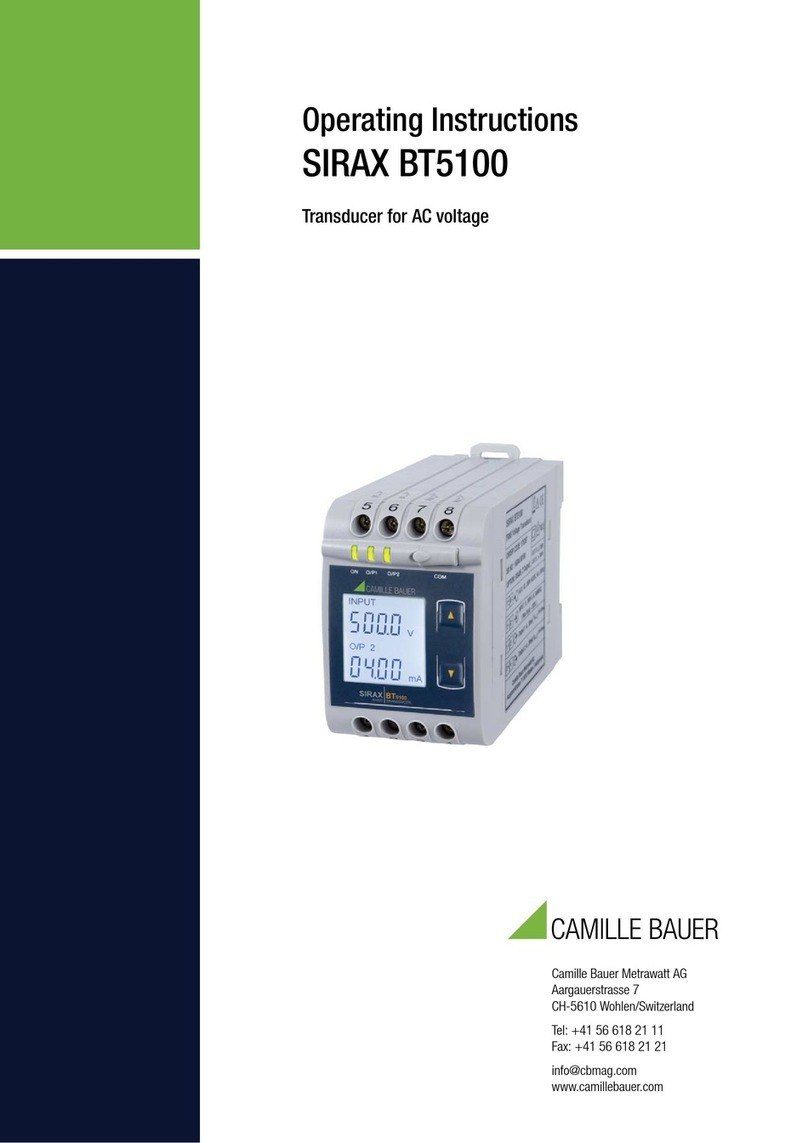
Camille Bauer
Camille Bauer SIRAX CH-5610 operating instructions
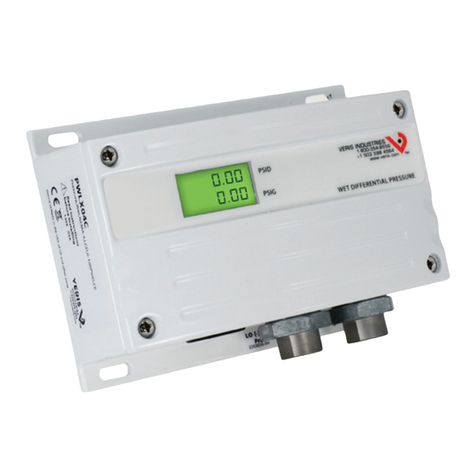
Veris Industries
Veris Industries PW Series installation guide

HBM
HBM TJ1-S6 installation manual
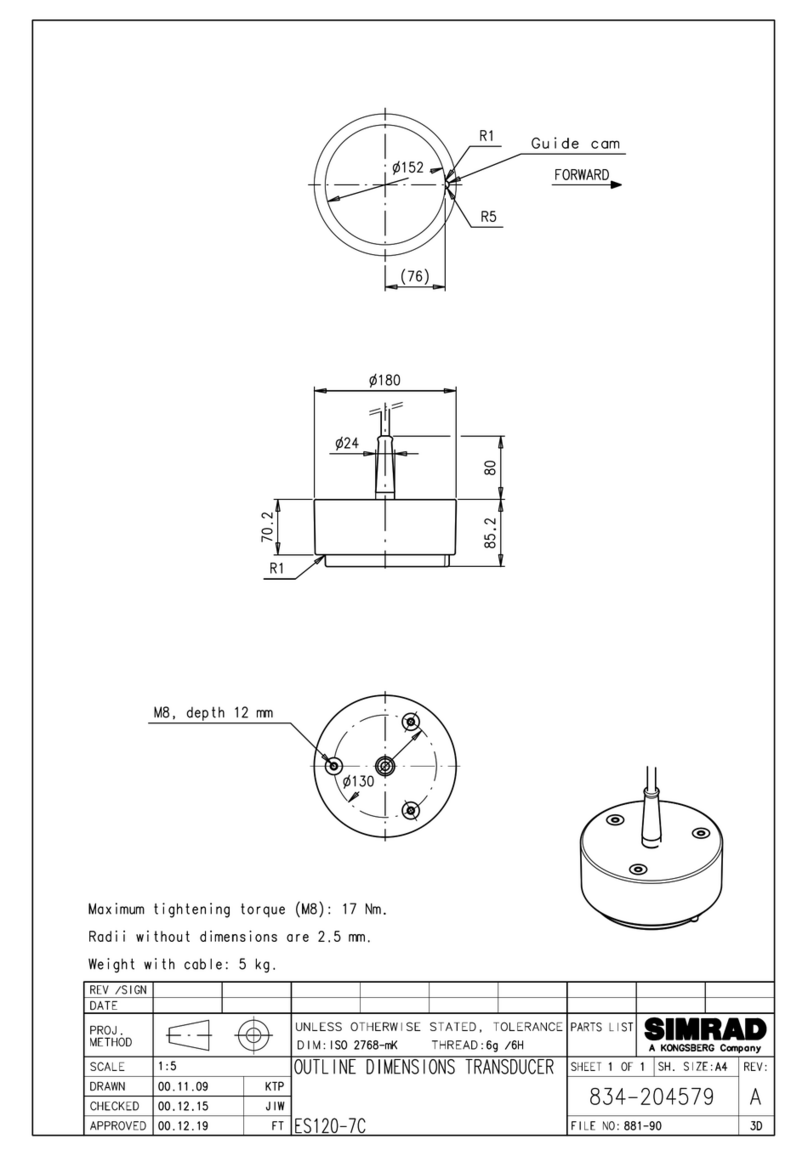
Simrad
Simrad ES120-7C - REV D Dimensions
